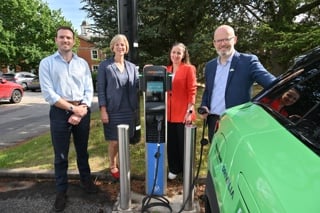By John Lewis, chief executive, BVRLA
Car rental is entering an exciting phase. Traditionally used for specific purposes – as a replacement vehicle, on business trips or for leisure journeys – the pay-as-you-go car is increasingly being seen as an all-round ‘mobility solution’.
A whole range of variations have appeared on the car rental theme, including car clubs and corporate car clubs such as ZipCar and Alpha City, car-sharing operations such as Car2Go and DriveNow, and ‘drive your neighbour’s car’ offerings such as WhipCar.
None of these varieties of car rental provides the perfect solution to everyone’s motoring needs; each is suited to certain types of journey.
However, they complement each other and together provide a growing suite of car rental options that make people and companies more comfortable with the idea of giving up more of their own cars.
The initial opportunity is in urban areas, where factors like congestion charges, limited parking and good public transport networks already weaken the case for car ownership.
To win new types of customer, this new range of car rental operators will need to use technology to integrate with the wider transport network.
One-way car-sharing operations that rely on cars being available in the right places are already making good use of geofencing technology to help ensure this happens.
Better customer information is also a key requirement. Transport advice websites like the Transport for London Travel Planner would be a great place to start.
Unfortunately, local authorities still lag behind. Driven by central government transport policy edicts, most are focused solely on one or two car clubs and often seen as a profit-making way of selling off special parking spaces.
It is time the Government stimulated further research into this area.




















Jonathan Hampson, Zipcar UK - 03/10/2012 13:35
I would certainly agree that, at long last, some much needed innovation is being brought to this sector and that this gives consumers and businesses alike unprecedented options vs car ownership or running a pool fleet. The last quarter of John's blog though comes across as misinformed and misguided. Whilst I would absolutely agree that barriers exist to fulfilling the potential of these new models I am not sure John has correctly identified the key issues. Firstly, I do not recognise the 'transport policy edicts' that John mentions. Each local authority makes their own decision on whether (and how) to embrace these new transport models. There is zero steer from government (DfT provide little to no guidance) and little steer from local government (TfL, London Mayor). Secondly,the statement about authorities using these new models to sell off parking spaces for profit also does not ring true and is baseless I suspect. A really significant body of research exists already into the benefits of these new models - rather than calling for further research by government I would encourage John to engage with all the stakeholders here (operators, policy makers etc) to identify the real barriers that exist and work with them to break them down.